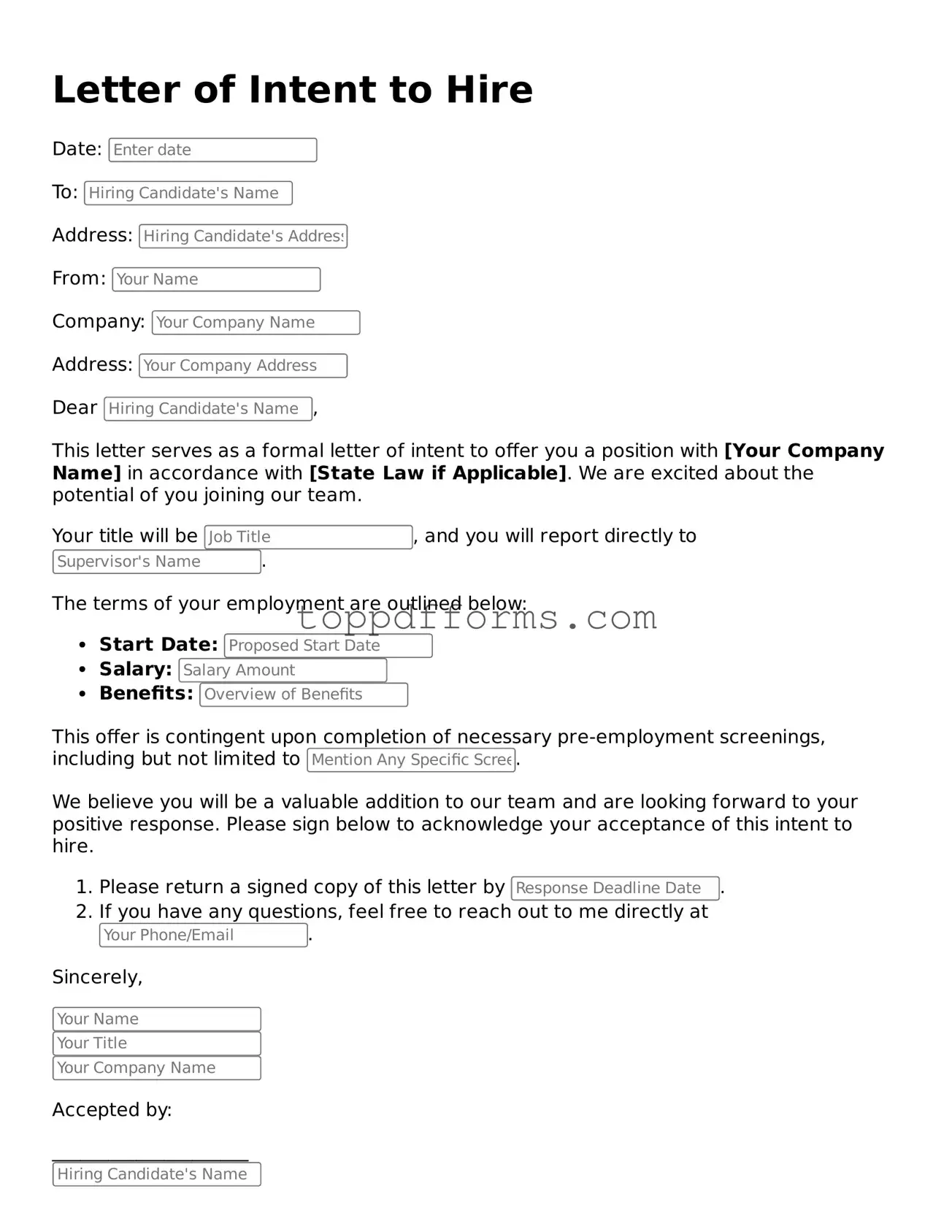What is a Letter of Intent to Hire?
A Letter of Intent to Hire is a document that outlines the preliminary agreement between an employer and a potential employee. It indicates the employer's intention to offer a job, detailing the position, salary, and other relevant terms. While it is not a legally binding contract, it serves as a formal way to express interest in hiring the candidate.
What should be included in the Letter of Intent to Hire?
The letter should include essential information such as the job title, start date, salary, benefits, and any conditions that must be met before the employment begins. It may also outline expectations for the role and any probationary periods. Including these details helps ensure both parties have a clear understanding of the agreement.
Is a Letter of Intent to Hire legally binding?
No, a Letter of Intent to Hire is generally not considered a legally binding contract. It expresses the employer's intent to hire but does not create an enforceable obligation. However, it is important to approach the document with seriousness, as it can set the tone for the upcoming employment relationship.
When should I send a Letter of Intent to Hire?
The ideal time to send a Letter of Intent to Hire is after the interview process has concluded and the employer has decided to extend an offer. This document can help solidify the candidate's interest and confirm the details discussed verbally during the hiring process.
Can the terms in the Letter of Intent to Hire be changed?
Yes, the terms outlined in the Letter of Intent to Hire can be modified. If either party wishes to make changes, they should communicate openly about their needs and concerns. It’s essential to agree on any adjustments before the final employment contract is drafted and signed.
What should I do if I receive a Letter of Intent to Hire?
If you receive a Letter of Intent to Hire, take the time to review it carefully. Ensure that all the details align with your expectations and previous discussions. If everything looks good, you can respond with your acceptance. If you have questions or concerns, reach out to the employer for clarification before moving forward.
